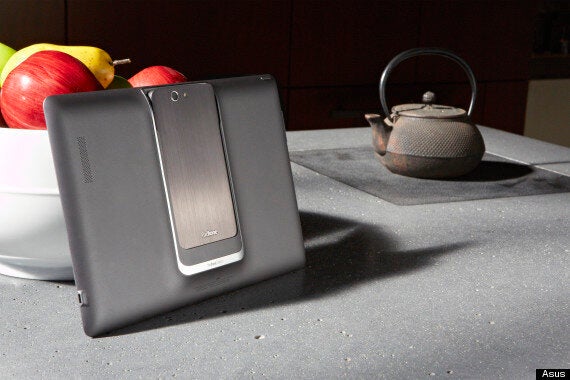Asus used MWC 2013 to announce a big range of surprising - and occasionally slightly strange - products which are set to build on its reputation that has been glowing since it launched the Google Nexus 7.
But it was occasionally difficult during the Taiwanese tech giant's press conference to see the method behind the - if not madness, perhaps eccentricity.
We caught up with Jonathan Santuab, regional director of Asus for the UK, to tell us about Asus's vision for the future of tech - and why exactly it makes sense.
It was a refreshingly open interview - and yes, it included at least one Dom Joly reference.
But first we had to ask if he really saw anyone using the 7-inch Fonepad as a mobile phone...
It's hard to avoid words like 'eccentric' when you release a range of products like you did today. Is Asus defined by this 'madcap' attitude - its wide variety of ideas?
I wouldn't say it's madcap. I'd say that we changed the market with the Nexus 7, which is a brilliant device and in many people's opinion it's the one to follow. That's why we're seeing our competitors try to catch up with the iPad Mini, which launched recently and is doing really well, but that wouldn't have happened without us. Steve Jobs said they'd never work, that there was no reason for it.
We see it as by putting a phone in our seven inch device, it's a natural progression. There's the affordability angle, but you're also not going to do a Dom Joly and permanently walk around like this [puts Fonepad to side of face]. But you jump off a plane, you're cab hasn't turned up and it's minus-10, do you care if you look stupid? Or you urgently need to phone home for medical, or whatever reason?
We don't see this as being your primary action [puts Fonepad to face again], as opposed to speakerphone or hands-free. But - personal opinion? I think that's going to take off [Fonepad to face again]
I jest, but what's really interesting is we've looked at analysis, and twice as many people use their smartphone tablet devices for surfing as for talking. What's more important is large screens, then it's the matter of if you have a large screen, do you need two devices? Can you afford them? If not, what are the trade-offs.
Do you think there is a hardware innovation, or a new technology, that will solve that problem more elegantly than you've done with the Fonepad?
The short answer would be I'm not a technologist, I don't know where the future is going, but we have a defined roadmap for this year and next year, things come and go and change, but our current strategy is to deliver different products for different customer needs, at different price points, with different specs… It's about how you then package that and give customers a choice.
Padfone is different, but it's only different because no one else is doing it. That's not just because - you said it's madcap and everyone thinks it's mad, it's also damn hard. It took us two years to develop the seamless dock-in dock-out solution, for instance.

Above: The Padfone Infinity
What one innovation you released today do you think will make the most difference to peoples' lives?
If you want to pinpoint one thing I would say that we are delivering different types of products to meet different types of customers' needs. With the Padfone Infinity it's about the 'best of the best'. The best ID with the best materials, with aerospace-grade aluminium, CPU and specs. … With Fonepad we're basically coming at in from another angle.
With the Padfone, it's about a phone first that when you want the larger screen, to charge it or use it one the go, you've got that ability. The Fonepad is targeted at a different customer. We basically developed it on the basis that we believe that there are people out there who want a larger surface browsing experience, they're in the market for a smartphone and they want a tablet, but they don't have the money for both. Today, you have to buy a phone.
You know what? We'd like all our customers to afford Padfone Infinity but that isn't the case… This is a mass-market product, that's why it's £179.
In my experience people like the idea of Padfone - the Padfone 2 and the Infinity - but aren't yet ready to jump over and buy into the idea with their own cash. What's going to be your elevator pitch to get them to do so?
It's difficult to put it in a ten-word pitch. In essence I would say the Infinity is the best specs LTE phone, that has the ability to transform itself into a tablet - when you want it to… It's about giving people the larger-screen experience when they want it, but with the right capabilities inside to do everything that they need.
Is it annoying or frustrating that customers - and people like me - don't get that it's really hard to make a phone - even a cheaper one?
It's not frustrating, and I think it's wrong to say that people don't understand how to make a phone or understand what phones cost to build. It's not for us to tell people how much they have in their wallet to spend… What we would prefer to happen is people appreciate the quality and time we put into our devices, and the fact that - you know what - we are trying to give you the best possible products. Sometimes to give you the best of the best you have to pay for it. But if you want something more affordable, we will have different products.

